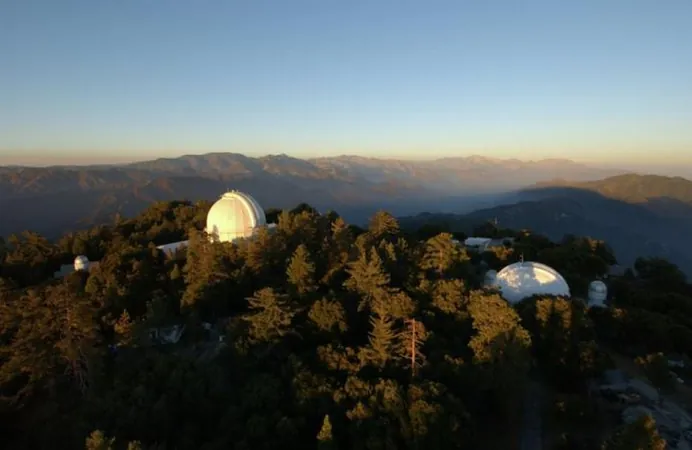
Unveiling Stellar Secrets: The CHARA Array's Next Chapter in Astronomy
2025-07-23
Author: Liam
A Stellar Journey Begins
For over 20 years, Georgia State University’s Center for High Angular Resolution Astronomy (CHARA) has been at the forefront of stellar research with its six-telescope interferometer. Celebrating two decades of groundbreaking discoveries, CHARA has authored a stunning 276 research papers, transforming Georgia State from an obscure institution into a leading research university.
Pioneering Research from the Start
Hal McAlister, a key figure in CHARA's early days and now a Regents' Professor Emeritus, published one of the array's inaugural papers focusing on the brilliant star Regulus. This work not only recorded the first interferometric measurements of gravity darkening in a rapidly rotating star but also marked a significant milestone for observational astronomy.
Unmatched Contributions to Astrophysics
Since its inception, CHARA has profoundly influenced our understanding of stars, measuring their sizes across various masses and evolutionary stages. The combination of CHARA's data with findings from Gaia and Hipparcos has allowed scientists to enhance their insights into stellar evolution models, revealing features and shapes of stars like never before.
A Vision Realized
According to Theo ten Brummelaar, the former director of CHARA, the early skeptics didn’t foresee Georgia State’s rise as a research powerhouse. Yet, thanks to strong support and ingenuity, CHARA positioned itself as a leader in ground-based optical interferometry, redefining our understanding of the cosmos.
Stars and Their Planets: A Crucial Connection
In this era of exoplanet exploration, grasping the nature of stars is more vital than ever. As ten Brummelaar stated, "Without understanding stars, we’ll never understand planets." CHARA’s research, showcased through innovative HR diagrams involving 693 stars—with many hosting exoplanets—exemplifies its significant contributions.
Expanding Horizons with New Research
Douglas Gies, the current CHARA Director, noted the astonishing revelations of the array, further solidified by its superior capabilities in studying rapidly-rotating stars that challenge current stellar physics norms.
Exploring Nova Explosions
CHARA has also made strides in our understanding of Nova explosions, capturing the expanding fireballs of these transient phenomena. The array’s observations revealed complex structures of Nova events, which until now, were overly simplified in scientific discourse.
Unlocking Future Discoveries
As demand for CHARA's observing time soars, the National Science Foundation has awarded $3.5 million to broaden access for researchers, foreshadowing groundbreaking findings about stars, planets, and beyond.
Upgrades and Innovations Ahead
With recent enhancements, including a new mobile telescope slated for deployment in 2024, CHARA is set to broaden its observational horizons significantly, increasing its baseline from 330 meters to 550 meters. This upgrade allows for detailed imaging of larger stars, pushing the envelope of what's possible in astronomical research.
As Nigel Sharp from the NSF’s Division of Astronomical Sciences remarked, "CHARA runs the best optical and infrared interferometer in the world," promising exciting advancements for both seasoned astronomers and newcomers eager to explore the wonders of the universe.









 Brasil (PT)
Brasil (PT)
 Canada (EN)
Canada (EN)
 Chile (ES)
Chile (ES)
 Česko (CS)
Česko (CS)
 대한민국 (KO)
대한민국 (KO)
 España (ES)
España (ES)
 France (FR)
France (FR)
 Hong Kong (EN)
Hong Kong (EN)
 Italia (IT)
Italia (IT)
 日本 (JA)
日本 (JA)
 Magyarország (HU)
Magyarország (HU)
 Norge (NO)
Norge (NO)
 Polska (PL)
Polska (PL)
 Schweiz (DE)
Schweiz (DE)
 Singapore (EN)
Singapore (EN)
 Sverige (SV)
Sverige (SV)
 Suomi (FI)
Suomi (FI)
 Türkiye (TR)
Türkiye (TR)
 الإمارات العربية المتحدة (AR)
الإمارات العربية المتحدة (AR)